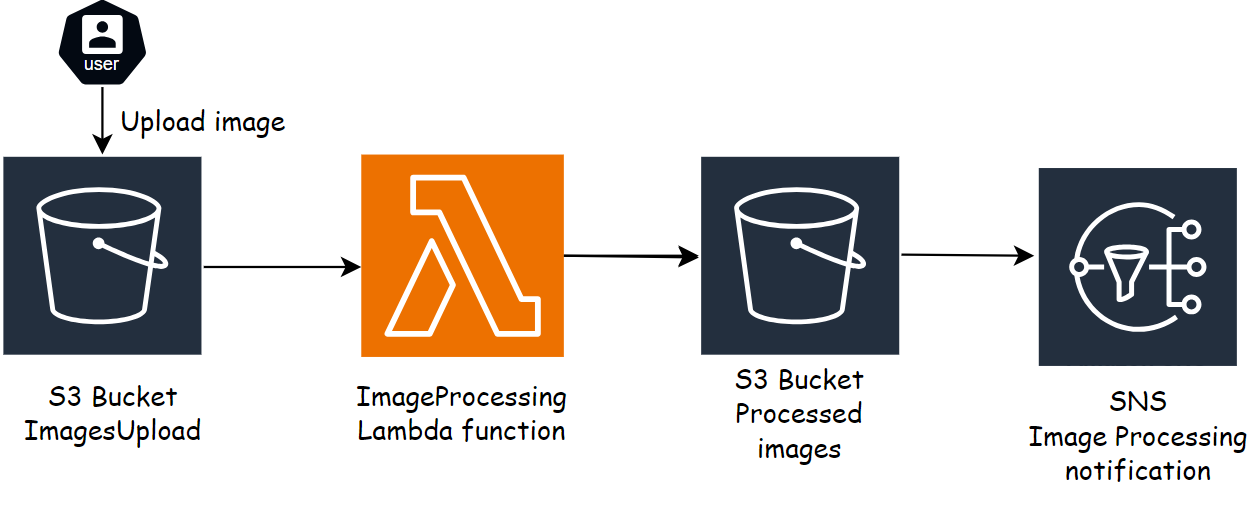Decoupled Integration with AWS Lambda: A Guide to Building Scalable, Resilient Systems
 Chethana S V
Chethana S V
In today’s tech world, flexibility and scalability are crucial in order to keep up with the demands of modern applications. As apps get more and more complex, one strategy that’s become popular is decoupled integration. This approach allows different parts of your application to work independently, making it easier to manage and adapt over time. By using AWS Lambda, you can create an architecture where components communicate without being tightly linked, almost like they’re having a conversation without being stuck in the same room. This not only makes your system more modular but also enhances its resilience and scalability. Let’s take a closer look at how this can change the way you develop applications!
What is Decoupled Integration?
Decoupled integration is an architectural strategy that involves separating systems or services to minimize their dependencies on each other. This setup means that when you make changes to one component, it won’t directly impact the others, allowing for a more modular, flexible, and manageable architecture. For instance, consider a backend service responsible for processing payments. Instead of directly calling another service to send notifications, it simply triggers an event. The notification service then listens for that event and takes care of the notification independently. This way, each component can operate smoothly without interfering with the others.
Benefits of Decoupled Integration
Scalability: One of the great things about decoupled services is that they can scale independently. This means that if one part of your application needs more resources—like during a busy sale period—you can boost that specific service without having to adjust everything else.
Resilience: With a decoupled architecture, if one component runs into trouble, it doesn’t take the whole application down with it. This isolation helps keep your overall system more stable and reliable, as other services can keep functioning even if one fails.
Agility: Decoupled integration allows different teams to work on and deploy services at their own pace. This independence means that teams can focus on specific components, making it easier to maintain, update, and roll out new features without waiting on others.
Reduced Latency: In a decoupled system, services can communicate asynchronously. This means that when one part is waiting for a response from another, it doesn’t block the entire process. Instead, components can continue to work on their tasks, reducing overall wait times and improving performance.
Decoupling with AWS Lambda
In the world of cloud computing, AWS Lambda has emerged as a game-changer for building decoupled architectures. As a serverless compute service, Lambda allows developers to run code without the hassle of provisioning or managing servers. This flexibility is especially beneficial when combined with other AWS services like Amazon SQS, SNS, EventBridge, and S3. Together, they create a robust environment for developing applications that are both modular and resilient.
What is AWS Lambda?
At its core, AWS Lambda enables you to execute code in response to events without worrying about the underlying infrastructure. This means you can focus on writing your application logic while Lambda automatically handles the scaling and resource management. It's perfect for use cases where you want to run code in response to changes in data, system state, or user actions.
Key Services for Decoupling with Lambda
Let’s take a closer look at some of the key services that can be integrated with AWS Lambda to achieve effective decoupling:
Amazon SQS (Simple Queue Service):
Amazon SQS is a fully managed message queuing service that acts as a buffer between different components of your application. It allows services to send and receive messages without needing a direct connection. For example, if you have a service that processes orders, it can send messages to an SQS queue when new orders are placed. Lambda can then be set up to poll this queue, triggering the processing function whenever a new message arrives. This decouples the order processing from the order placement, allowing each component to scale and operate independently.Amazon SNS (Simple Notification Service):
Amazon SNS is a publish-subscribe messaging service that facilitates communication between different parts of your application. With SNS, you can create topics that Lambda functions can subscribe to. For instance, when an event occurs—like a new user signing up—an SNS topic can notify all subscribed Lambda functions. This enables you to implement features such as sending welcome emails or updating analytics without directly tying these processes to the user sign-up action.Amazon EventBridge:
EventBridge is a serverless event bus that simplifies the process of connecting and routing events between different services. It allows you to set up rules that determine which events trigger your Lambda functions. For example, if you want to execute a Lambda function whenever a new file is uploaded to S3, you can configure EventBridge to listen for that specific event and trigger the appropriate Lambda function. This decouples the event source from the processing logic, making your architecture more flexible.Amazon S3:
Amazon S3 (Simple Storage Service) is not just a storage solution; it also plays a crucial role in decoupling architectures. You can configure S3 to trigger Lambda functions when objects are created, updated, or deleted in your buckets. For instance, if you store images in S3 and want to generate thumbnails whenever a new image is uploaded, you can set up an S3 event to trigger a Lambda function that creates and stores the thumbnail. This asynchronous workflow enhances the responsiveness of your application.
The Power of Asynchronous Execution
One of the standout features of integrating AWS Lambda with these services is the ability to handle events asynchronously. This means that when an event occurs, such as a new message in an SQS queue or a file uploaded to S3, your Lambda function can respond without requiring a direct, synchronous connection to the service that generated the event. This not only reduces latency but also improves the overall performance of your application.
By leveraging the capabilities of AWS Lambda along with these key services, you can build a decoupled architecture that is modular, scalable, and resilient. This approach allows your development teams to work independently on different components, leading to faster deployments and a more agile development process.
Decoupled Image Processing System
Let’s walk through an example of building a decoupled image processing system using Lambda.

Architecture:
Image Uploads: Create two S3 buckets – one for uploads and one for processed images. Users upload images to an S3 bucket (
ImageUploads).S3 Event Trigger: When an image is uploaded, an event triggers a Lambda function.
Image Processing Lambda Function: The Lambda function reads the image, resizes it to the required resolutions, and stores them in an output bucket (
ProcessedImages).Notification Step through SNS: Once processed, this SNS topic can then trigger another Lambda function to send a notification (e.g., via email or SMS using Amazon SES or Amazon SNS).
Key Considerations for Decoupled Lambda Architectures
When working with decoupled architectures using AWS Lambda, there are several important considerations to keep in mind to ensure your system runs smoothly and efficiently.
Retry Logic: In asynchronous systems, things don’t always go as planned. That’s why it’s crucial to have a retry mechanism in place for processes that might fail. AWS Lambda has built-in retry capabilities, meaning if a function fails, it can automatically try again a couple of times.
Concurrency Management: AWS Lambda functions can handle many requests simultaneously, but this can lead to unexpected costs if not monitored. For applications with high traffic, it’s essential to manage concurrency properly. AWS provides throttling options, which let you set limits on how many instances of a function can run at once.
Event Filtering: When you’re using AWS EventBridge to manage events between services, it’s important to filter those events effectively. This ensures that your Lambda functions only respond to relevant events, reducing unnecessary invocations and saving on costs.
Security and Permissions: Even though your services are decoupled, they still need to communicate securely. This requires careful management of IAM (Identity and Access Management) roles and permissions. Always follow the principle of least privilege—only give services the permissions they absolutely need to function.
Conclusion
Decoupling your applications with AWS Lambda and associated services is a smart way to enhance your architecture's flexibility and reliability. By leveraging services like S3, SQS, SNS, and EventBridge, you can create workflows that are modular, resilient, and scalable. Whether you're building a new application from scratch or looking to improve an existing one, considering a decoupled approach can lead to significant benefits. So, dive in and start exploring how AWS Lambda can transform your application development journey!
Subscribe to my newsletter
Read articles from Chethana S V directly inside your inbox. Subscribe to the newsletter, and don't miss out.
Written by

Chethana S V
Chethana S V
I’m a DevOps engineer passionate about automation, cloud infrastructure, and security. Currently, I’m diving into the world of DevSecOps, integrating security into the DevOps lifecycle. Always eager to learn and apply new technologies, I aim to build secure, scalable systems and share my experiences along the way through this blog.